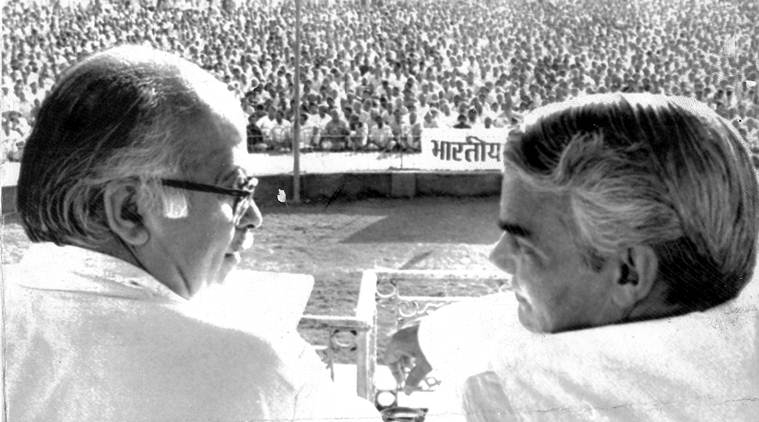 Atal Bihari Vajpayee with LK Advani at the BJP rally at Ramlila Maidan after parting ways with the Janata Party in April 1980. (Express Archive)
Atal Bihari Vajpayee with LK Advani at the BJP rally at Ramlila Maidan after parting ways with the Janata Party in April 1980. (Express Archive)
MOURNING the demise of former Prime Minister Atal Bihari Vajpayee, former Deputy Prime Minister and his comrade-in-arms for almost 65 years L K Advani described him as “one of India’s tallest statesmen”.
Vajpayee, in fact, did secure for BJP, its highest ever electoral support in the 1998 elections — 9.43 crore votes, a jump of almost 40 per cent from its 6.79 crore votes polled in 1996. But, subsequently, the BJP’s vote share and absolute vote tally kept falling, in 1999, in 2004, in 2009 — until Narendra Modi came and swept the 2014 elections, giving BJP an unprecedented 16.95 crore votes.
“It was due to the perseverance and struggles of Atalji that the BJP was built brick by brick. He travelled across the length and breadth of India to spread the BJP’s message, which led to the BJP becoming a strong force in our national polity and in several states,” Prime Minister Narendra Modi said Thursday, crediting Vajpayee for building the BJP. And added how he “was an inspiration to Karyakartas like me”.
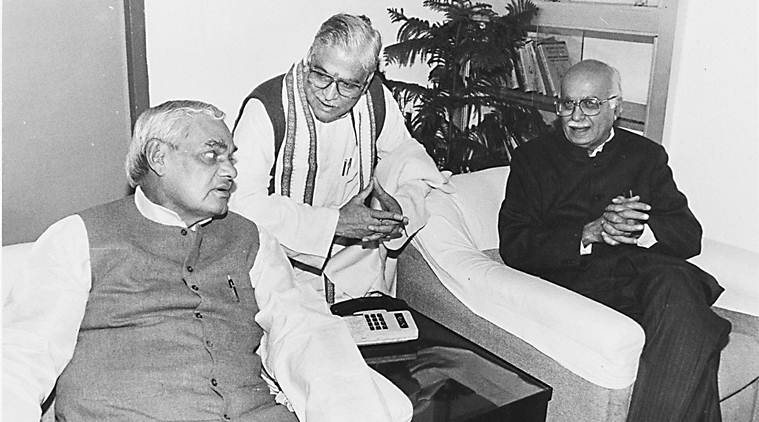 Atal Bihari Vajpayee with MM Joshi and LK Advani. (File Photo)
Atal Bihari Vajpayee with MM Joshi and LK Advani. (File Photo)
Both these leaders took BJP to new electoral heights with their charisma and nationwide appeal, both shaped the party as it grew over the years.
Although Modi is much junior to Vajpayee in politics, their paths once crossed famously in the virtual showdown between those supporting one or the other at the BJP’s national executive in Goa in April 2002 weeks after the post-Godhra Gujarat riots.
Vajpayee had made public his anguish when he publicly suggested that Modi should follow “rajdharma” as the Chief Minister of the riot-hit state.
An anguished Vajpayee was learnt to be keen to get Modi resign. However, in a coup of sorts the vociferous objections to Modi’s offer to quit from BJP executive members forced Vajpayee to retreat. Modi continued to serve as CM until 2014 when he was elected as Prime Minister.
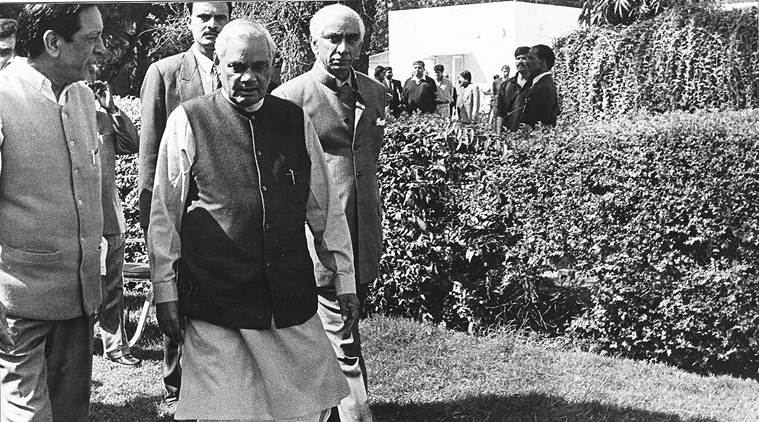 Prime Minister Vajpayee with Cabinet colleague Jaswant Singh (right). (Photo: Harish Tyagi)
Prime Minister Vajpayee with Cabinet colleague Jaswant Singh (right). (Photo: Harish Tyagi)
Modi’s opponents repeatedly invoked Vajpayee’s “rajdharma” remark to corner him as he gained in political stature. Modi, however, proved his detractors wrong and emerged as the tallest mass leader that BJP has produced in terms of the electoral successes he has brought to the BJP.
Completing a full term, Vajpayee proved to the political establishment that a non-Congress Government can provide a stable government.
“Vajpayee established that not only a political alternative was possible without the Congress but also that it will be credible enough. It laid to rest previous apprehensions that the Opposition cannot forge a credible alternative,” BJP vice-president and Rajya Sabha member Vinay Sahasrabuddhe said.
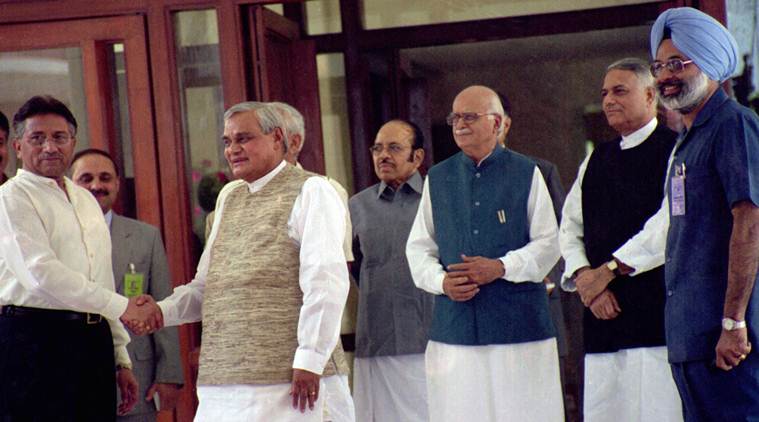 Atal Bihari Vajpayee with missile man APJ Abdul Kalam in Pokhran. India becoming a declared nuclear power in 1998, altered the region’s security paradigm, both vis-à-vis Pakistan and China. (File Photo)
Atal Bihari Vajpayee with missile man APJ Abdul Kalam in Pokhran. India becoming a declared nuclear power in 1998, altered the region’s security paradigm, both vis-à-vis Pakistan and China. (File Photo)
While Vajpayee ran a coalition government with the BJP minority of 182, Modi has run a coalition government despite a clear majority of 282. Vajpayee, who could not cobble up a majority in 1996, however, managed to run a coalition government of over a dozen parties later establishing that a coalition government could be stable. In fact, the Congress took a leaf from this experiment and ran a UPA government for two consecutive terms.
Vajpayee may have passed away today but his defeat in 2004 and his poor health a few years later ensured that he slipped into the shadows over a decade ago.
What endures is the fact that his was a politics of consensus and reconciliation.
Take his reaction to the India-US nuclear deal. “The agreement raises several questions over our independent nuclear doctrine…the nation should be taken into confidence over this indirect restriction over our nuclear capabiliy,” Vajpayee had demanded in Lok Sabha on August 3, 2005 after the then Prime Minister Manmohan Singh signed the agreement in July 2005.
This restraint was at variance with the belligerent opposition of the Indo-US nuclear deal by the BJP that precipitated a floor test in July 2008 when Vajpayee was indisposed.
No wonder that the Opposition today is bitterly critical of Prime Minister Modi and his chosen BJP president Amit Shah and fondly remember Vajpayee’s approach to engage the Opposition and reach out to those across the aisle.
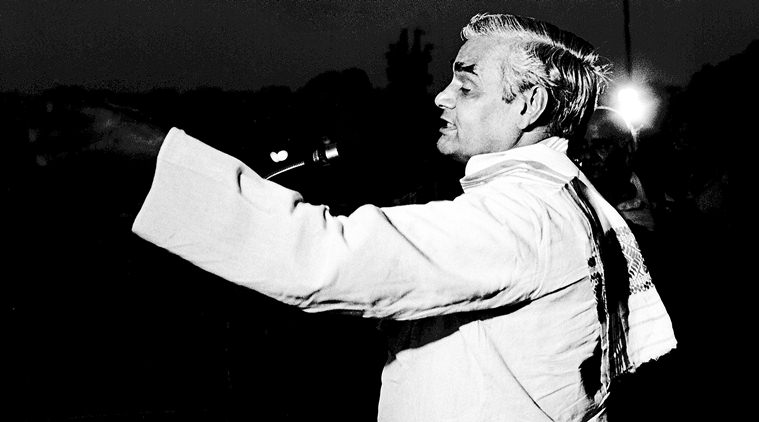 Vajpayee shared cordial relations with CM’s late father Gangadharrao Fadnavis.
Vajpayee shared cordial relations with CM’s late father Gangadharrao Fadnavis.
In fact, multiple sources have revealed how Vajpayee reached out to Opposition parties — in particular, the Left — over US pressure to send Indian forces to Iraq in 2003 and managed to ward off pressure from within his own government to accept the American request.
“He observed a certain dignity in his long political career. Power at all cost was not his dictum. He had a particular approach towards politics that was people centric, not power centric. For him, the party was bigger than the individual but the nation was even bigger than the party,” K N Govindacharya, former BJP General Secretary (Organisation) who fell foul of Vajpayee for allegedly calling him Mukhauta (Mask), told The Indian Express.
“He didn’t believe in the politics of confrontation but a politics of dialogue (Sangharsh nahin, samvad ki rajneeti). His approach was that political differences should not turn into differences between hearts. And the grace should never be junked in politics,” Govindacharya added.
“The politics of dialogue is the mainstay of the politics. If there are any aberrations, these are transient. Aberrations can never sustain like this,” said Govindacharya when asked whether he witnessed any aberrations between the way BJP functioned then and now.
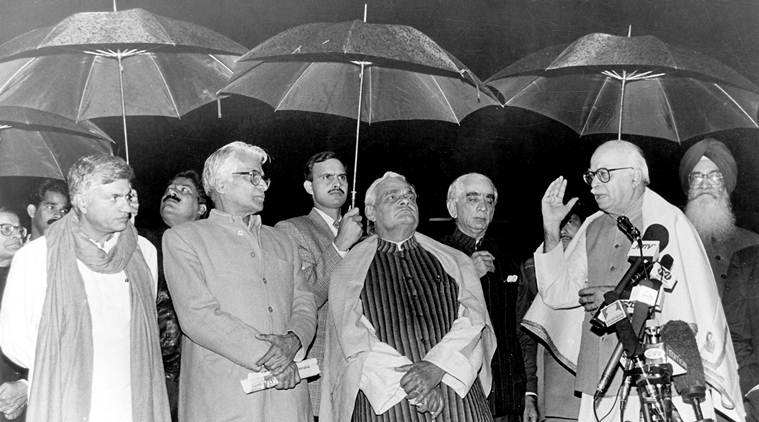 George Fernandes, Atal Bihari Vajpayee, Jaswant Singh, LK Advani and Surjeet Singh Barnala. (Express archive)
George Fernandes, Atal Bihari Vajpayee, Jaswant Singh, LK Advani and Surjeet Singh Barnala. (Express archive)
BJP vice-president Sahasrabuddhe, however, suggested that Modi is taking forward the Vajpayee legacy to bring development to the centre of political discourse.
“Politics of performance is a copyright of the BJP. While Vajpayee demonstrated it, Modi is taking it forward,” Sahasrabuddhe said.
He dismissed Opposition charges of Modi’s political approach vis a vis Vajpayee’s. “Going by opposition charges, Vajpayee also faced similar barbs when he was in power,” said Sahasrabuddhe.
Party leaders argue that differences between the two being highlighted by the Opposition is because of differences in their exposure to national politics. For a man who started his parliamentary career with 1957 Lok Sabha elections, Vajpayee has seen every Prime Minister since Nehru.
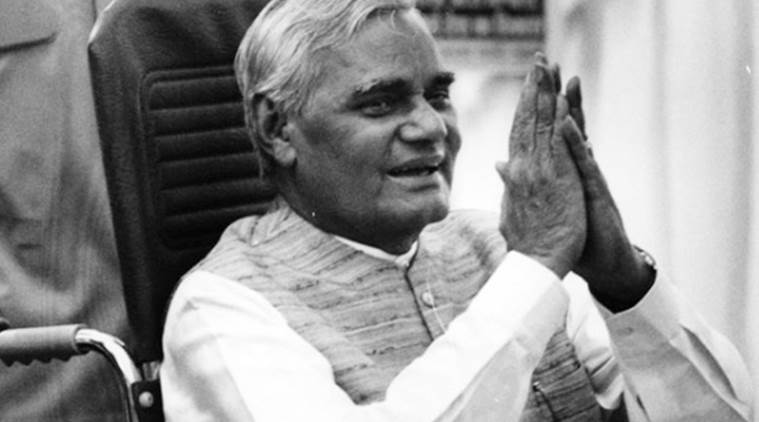 Advani, in his addresses to BJP national council meetings, would often recall how he and Vajpayee had never imagined controlling the reins of power one day.
Advani, in his addresses to BJP national council meetings, would often recall how he and Vajpayee had never imagined controlling the reins of power one day.
“Vajpayee had a long career in national politics. This meant he had long association with political actors in the national arena. This brings its own familiarity with opposition and equations,” said a BJP leader.
“BJP’s first Prime Minister (Vajpayee) ran a coalition government, our second PM (Modi) runs a majority government. Why should one isolate the individual from the circumstances? The two circumstances are qualitatively different,” said another senior BJP functionary adding, “these two (Vajpayee and Modi) are from different eras. While Vajpayee led us from the inception age, Modi is leading us when we have come of age”.
Advani, in his addresses to BJP national council meetings, would often recall how he and Vajpayee had never imagined controlling the reins of power one day. They, however, succeeded in transforming India’s unipolar politics into a bipolar one. It’s that which the BJP, under Modi-Shah, is building on.